Land Invertebrates
Media

Species Types
Scientific Name
About 6,500 species have been named so far, worldwide.
Description
Daddy longlegs, or harvestmen, are familiar Missouri animals. They are not spiders, but opilionids. Unlike spiders, they have a fused body form and lack silk and venom glands.
Media

Species Types
Scientific Name
Tetragnatha spp.
Description
Longjawed orbweavers are called stretch spiders because they rest with their legs stretched straight out in front of and behind their slender bodies. They build their circular webs horizontally, within a few feet above the surface of a stream or lake.
Media
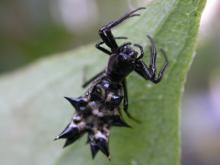
Species Types
Scientific Name
Micrathena gracilis
Description
The color pattern can vary, but the ten-spined, chunky abdomen sets the female spined micrathena apart from all other spiders.
Media
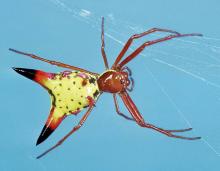
Species Types
Scientific Name
Micrathena sagittata
Description
One of three micrathena spiders in Missouri, the arrowshaped micrathena is small but unforgettable. Females have striking reddish, black, and yellow colors, and a pair of outward-pointing tubercles at the end of the body give it a triangular or "arrow" shape.
Media
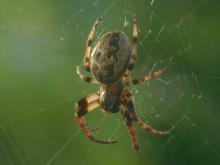
Species Types
Scientific Name
Larinioides spp.
Description
Furrow orbweavers have a distinctive dark pattern on the abdomen that resembles a furrow. These harmless spiders are common under the eaves of homes and near porch lights.
Media

Species Types
Scientific Name
Panorpa spp.
Description
Male scorpionflies will make you look twice, because the abdomen is tipped with what looks like a scorpion stinger! These nifty insects cannot sting, however.
Media
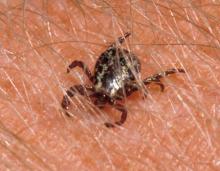
Species Types
Scientific Name
Three common Missouri species
Description
Ticks drink the blood of humans and other mammals. Because they can carry serious, sometimes deadly diseases, it's important to learn about ticks and how to protect yourself from their bites.
Media
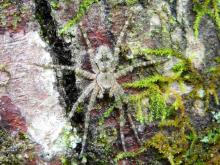
Species Types
Scientific Name
Dolomedes albineus
Description
Whitebanded fishing spiders are often seen on tree trunks, walls, or other vertical surfaces, sometimes far from water. The coloration and markings can vary, but many individuals have an olive-green cast that helps them blend in with mosses and lichens. Note the bristly legs.
Media

Species Types
Scientific Name
Neoscona crucifera
Description
A widespread species, the barn spider commonly builds its webs in woods and on the eaves of barns, houses, and similar structures.
Media

Species Types
Scientific Name
Neoscona arabesca
Description
The arabesque orbweaver is a common orb-weaving spider in Missouri. The coloration is quite variable, but the slanting dark marks on the abdomen help to identify it.
See Also



Media

Species Types
Scientific Name
Cisseps fulvicollis
Description
The yellow-collared scape moth is more often “orange-collared.” And whether you think it looks more like a firefly or a wasp, it’s still a moth!
Media

Species Types
Scientific Name
Nearly 150 species in North America north of Mexico
Description
Slim, delicate plume moths are instantly recognizable by their T-shaped silhouette, long legs, and muted shades of tan and brown. It can be hard to separate the various species.
Media

Species Types
Scientific Name
Pyrrharctia isabella
Description
Not many people know the adult Isabella tiger moth when they see one, but we’re all acquainted with its caterpillar, the woolly worm, or woolly bear.
About Land Invertebrates in Missouri
Invertebrates are animals without backbones, including earthworms, slugs, snails, and arthropods. Arthropods—invertebrates with “jointed legs” — are a group of invertebrates that includes crayfish, shrimp, millipedes, centipedes, mites, spiders, and insects. There may be as many as 10 million species of insects alive on earth today, and they probably constitute more than 90 percent all animal species.





















